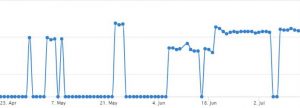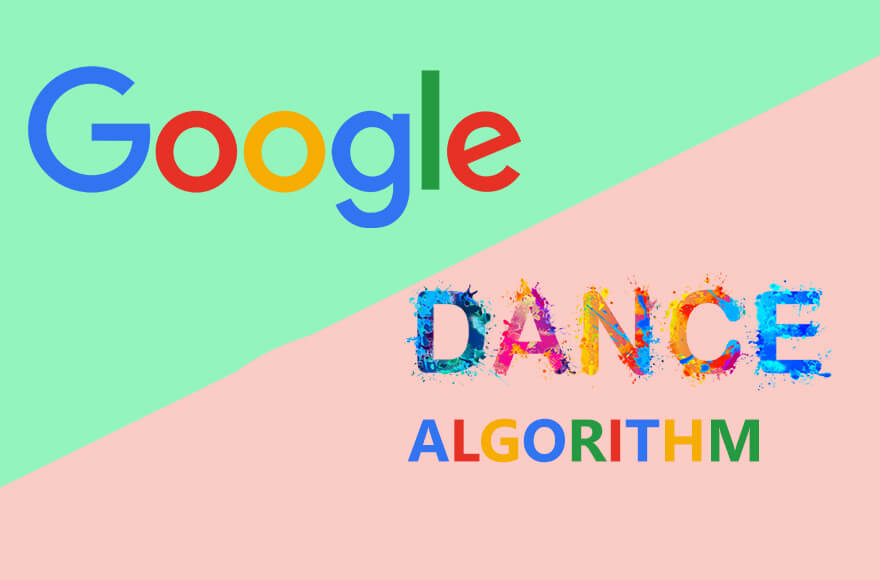What is Google Dance algorithm?
Like most web admins or SEO teams, are you looking for the reason for the change in the ranking of your website pages in Google search results (SERPs)? So it’s time to get familiar with the concept and application of the Google dance algorithm.
Google dance is a problem that most businesses face, but don’t forget that minor fluctuations in Google’s ranking over some time is a normal things, and after a while, the ranking of your site’s pages will remain stable. Familiarizing yourself with how Google’s dance algorithm works and the factors used in changing the ranking by this algorithm will give you a more specialized view of the fluctuations in the ranking of your website pages.
What is the Google Dance algorithm?
The Google dance refers to the fluctuations that occur due to the addition of new pages to the web. Fluctuations mean the same changes that happen in ranking the site’s pages. Google’s dancing algorithm is an interesting and important topic in the SEO community. Using this algorithm, Google checks the pages’ content and updates its rankings.
New websites, articles, pages, and blog posts are created daily. Google is constantly trying to adapt to these changes and add these new pages to the search results by making the necessary updates. These updates are the main reason for Google Dance.
Every time Google evaluates and adjusts the page rankings, all the search pages related to the desired keyword experience a jump phenomenon. But remember that most of the time, even without adding a new page, Google’s dance causes fluctuations in search results. These issues make the need to understand how the Google dance algorithm works more felt.
Google’s dance algorithm is one of the most useful algorithms used to rank website pages in search results.
If you are starting a new site, the Google dance algorithm will certainly help you. Of course, with one condition:
It is to provide valuable and useful content for users and provide this content to them with speed and high quality.3
Examining the reasons for the importance of the Google dance algorithm
This algorithm is one of the important algorithms of Google because it can directly affect the rank of your website, and as a result, more or less traffic will be directed to your website.
The important thing to know about the Google dance algorithm is that most of the changes caused by this algorithm are temporary and are only applied to check how the user reacts.
Things can get worse if you get worried after slight fluctuations in your desired PageRank and immediately try to make changes to your site’s content.
But if, after a certain period, you find that you are ranked lower, your site is losing its credibility and strength, and you should act as soon as possible.
There is only one fact about Google’s dancing algorithm. That is, Google’s dancing algorithm continues to play with it until the page rank of the website in question remains stable. Suppose during this process; upward movements are more than downward movements. In that case, it indicates that you are performing well, and the result of the Google dance algorithm will be satisfactory for you.
Reasons for implementing the Google dance algorithm – what sites are most targeted?
Sites that are newly created or have made sudden changes to their site are more affected by this algorithm. In general, there are four types of sites that this algorithm checks:
Newly created sites.
Startup sites are the first category most affected by the Google Dance algorithm. Startup sites are newly created sites that do not have any results in Google.
Google has no initial opinion about the level of user satisfaction with the content of these sites and therefore tries to get help from Google’s dancing algorithm. This way, the Google Dance algorithm places the site page in higher ranks to decide on the content’s value based on the users’ reactions. If the desired site is useful for the user, it will remain in the same high ranks with a slight drop in rank, but if it is not useful, it will fall to lower ranks.
Sites that have duplicate content.
Some sites have duplicate content. So that they copy their content from the content of other sites, and this causes them to lose their credibility in the eyes of the user. Of course, maybe users who don’t notice this duplication will react well to it, but other algorithms are against copying content.
In such situations, Google’s dance algorithm comes into play to make the necessary decisions about whether it is useful. If you have to use duplicate content, try to use it in the right place so that the user will enjoy accessing it, and also include the link to the source. Maybe you can get good rankings with these things, but don’t get your hopes up because other algorithms are sensitive to content repetition.
Sites that have done a lot of link building.
Link building is one of the most important topics in the site and SEO. Sometimes, sites get a lot of backlinks without considering key performance indicators (KPIs) in SEO. For example, a site that has not yet created a link, if it wants to receive backlinks from a thousand subdomains, it looks suspicious from Google’s point of view.
These sites suffer from Google’s dancing algorithm, and if they cannot satisfy the user, they will drop drastically; Therefore, you should follow the principles of link building and avoid excessive link building because this strategy is a type of black hat SEO Google is completely against. But what is the reason for this opposition? Do not miss this article to learn more about this.
Sites that have new keywords.
Sometimes, sites come up with new keywords that few sites have used. In such cases, Google uses the Dance algorithm to track user behavior toward these words.
The behavior of the user who entered your site by searching for that keyword is tracked. The good behavior of the user makes Google give more importance to that keyword from now on, and your site will be displayed to users as a good result in high ranks.
Of course, the following can also be the reason for your site’s ranking to change due to the implementation of Google’s dancing algorithm:
- Create new pages on the website
- Poor linking
- Google lacks confidence in the site due to weak backlinks, errors on the site, etc.
- Use competitive keywords
Some examples of the effects of the Google dance algorithm
You have surely noticed by now that your site’s pages jump in Google search results due to the implementation of the Google Dance algorithm, which has its reasons and continues for a certain time. In this section, we present some examples of changes related to the performance of the site pages:
By looking at the image below, you will notice the fluctuations in the desired page over several months. These pages have continuously moved up and down until finally settling on a higher rank:

Effective strategies for the fluctuation period caused by the Google dance algorithm
When this algorithm kicks in and your website page rank fluctuates, the best thing to do is wait. Don’t think too much about these fluctuations until the page state is stabilized.
Suppose you have implemented all the SEO strategies well and have not had any lack of work in this field. Be sure you will be rewarded in the end. Maybe early in the transition period, Google will respond by lowering your page rank. As Google has announced, every positive change is not the reason for an increase in ranking; in most cases, a fall will also happen until reaching the top ranking.
Don’t make Google think you’re cheating the system to reach #1 by overreacting to the results. SEO and good content take time, so don’t let the Google Dance algorithm undermine your strategies. So don’t pay too much attention to the rating status during fluctuations.
Pay attention to content quality and SEO strategies before and after the fluctuation period. Implementing white hat SEO strategies and effective link-building will help you climb the SERPs and achieve top rankings. But during periods of fluctuations, be patient and don’t let Google’s dancing algorithm influence your decisions.
Conclusion
Google’s dancing algorithm is the main reason for the fluctuations in website page rank. This algorithm is implemented to check the usefulness of the content and user satisfaction, and it continues until the desired page is placed in its proper rank. The only thing you have to do during the fluctuation period is to wait until the status of the desired pages remains stable and then make the necessary decisions by seeing their final rank.
Thank you for staying with us until the end of the article. We hope that reading this article was useful for you. If you have any questions or requests and need guidance, you can contact us by registering your opinion so that we can answer you as soon as possible.

